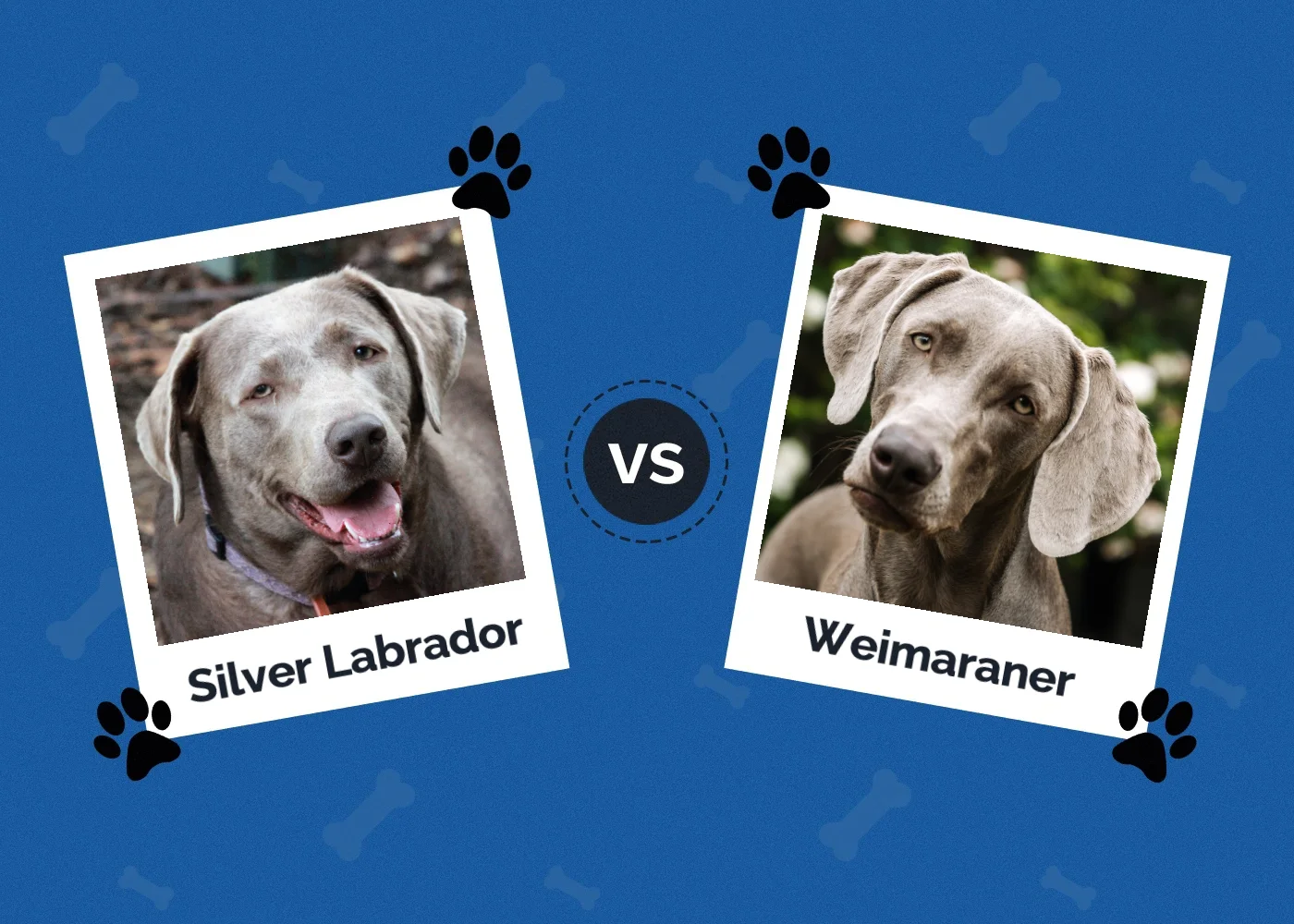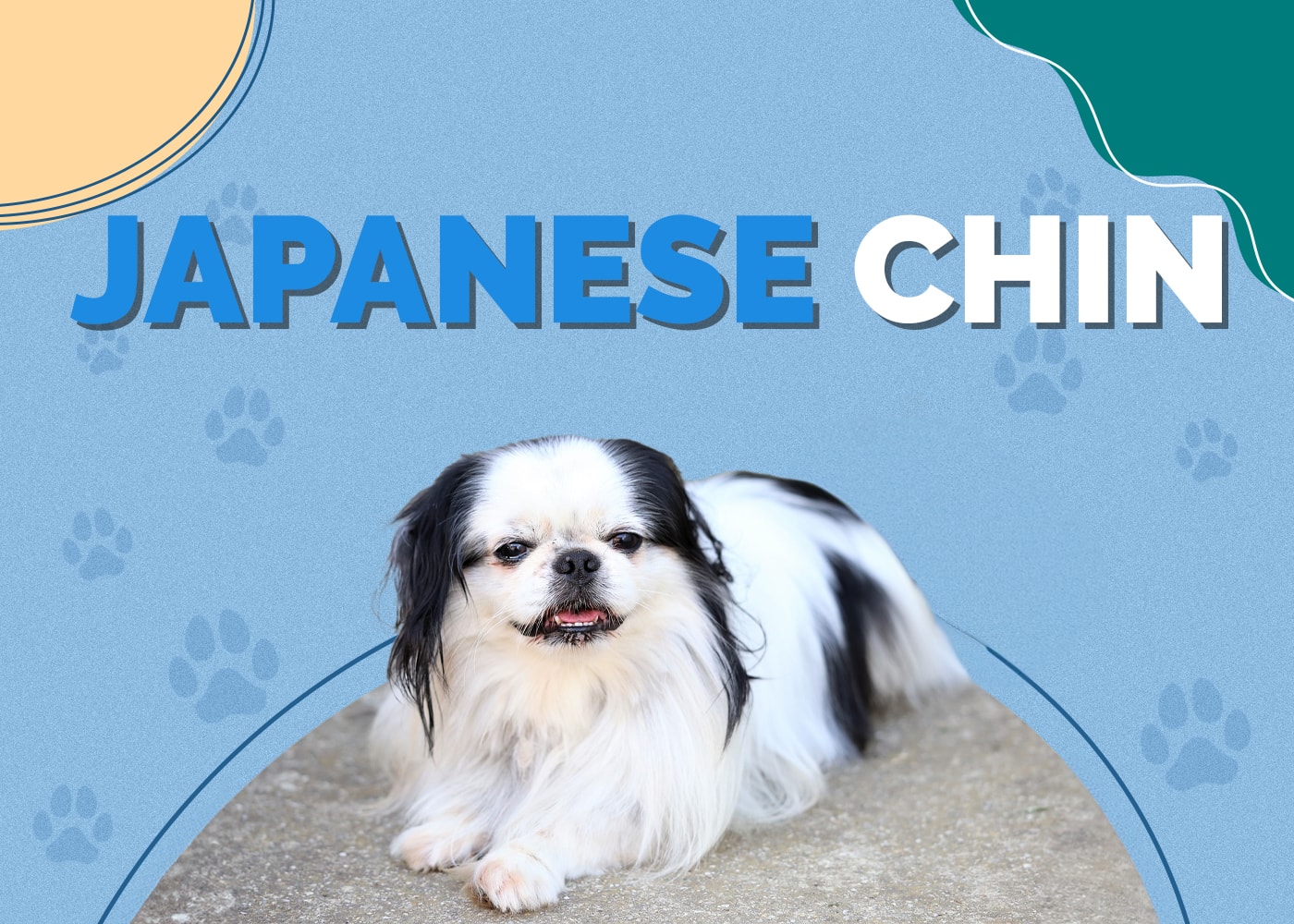Tornjak Dog Breed Info: Pictures, Characteristics & Facts

Updated on
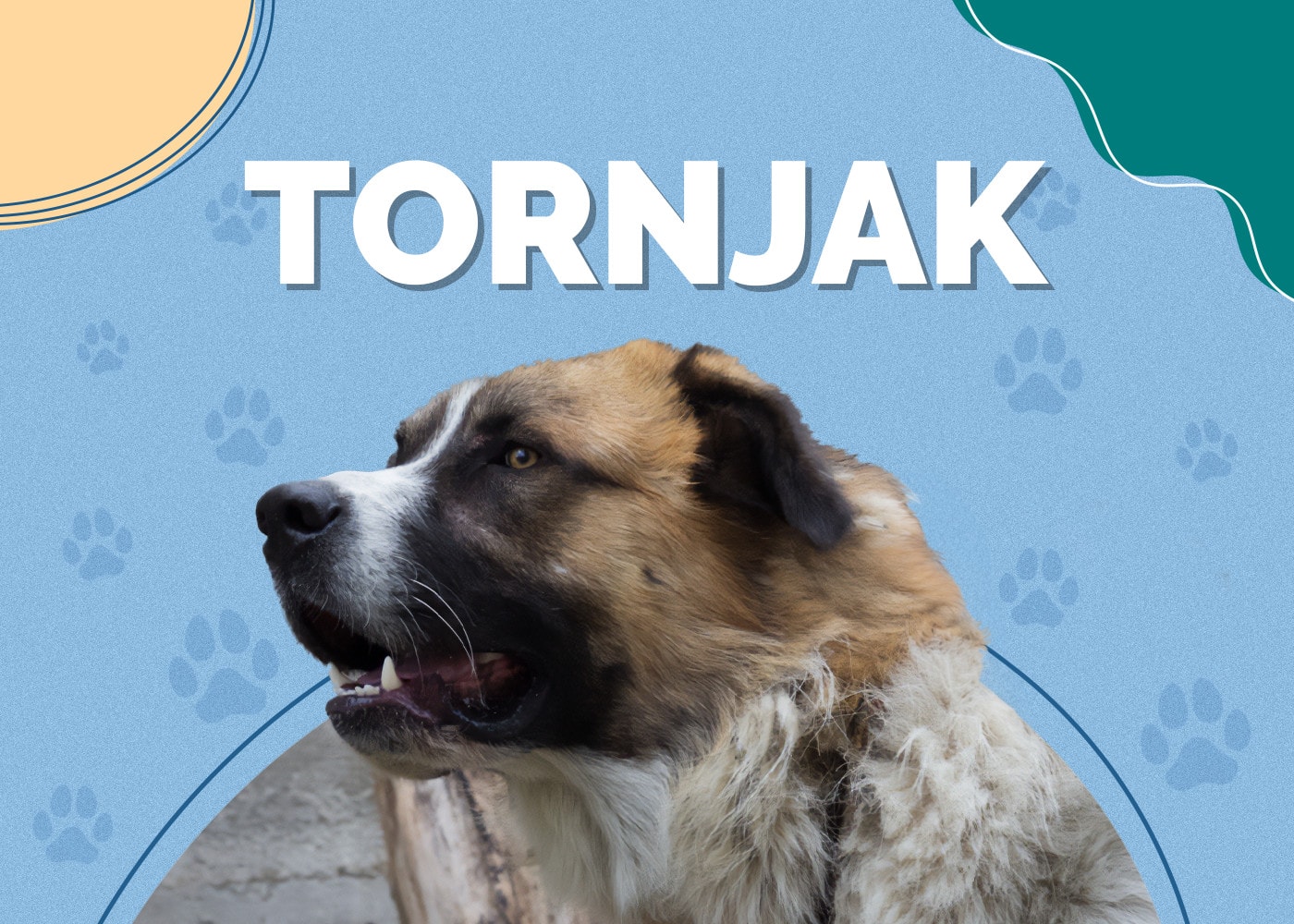
| Height: | 23–30 inches |
| Weight: | 60–110 pounds |
| Lifespan: | 12–14 years |
| Colors: | Piebald, black and white, white and chocolate, red and white |
| Suitable for: | Families with a large amount of space, those looking for a laidback watchdog |
| Temperament: | Calm, tough, easygoing, decisive, tenacious, peaceful |
As a native of Bosnia and Herzegovina and Croatia, the Tornjak is a large sheepdog that could have inspired the sheepdog from “Looney Tunes.” They’re loving and peaceful with their families but ferocious guardians when predators arrive.
There’s an old saying in their homeland that goes, “A Tornjak guarding his flock is a fair match to two wolves.” That should give you an idea of what these dogs are capable of when the situation calls for it.
They also make fantastic pets. However, many people don’t even know these dogs exist, so hopefully, this guide will help you become better informed about these wonderful pups.
Tornjak Puppies
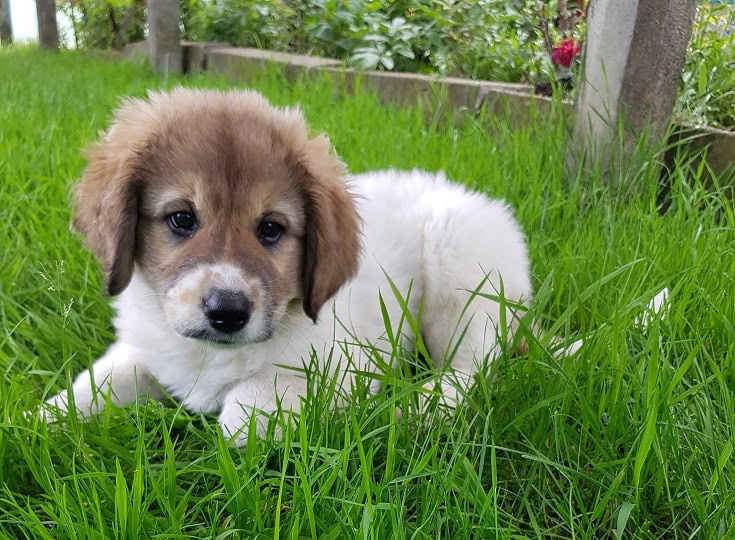
Tornjak puppies are so fuzzy they look out of focus. These big, adorable pups will melt your heart from the first minute you see them, especially since they’re as clumsy as they are cute.
While many people never encounter Tornjak puppies, those who do almost always fall head-over-heels in love from the first moment they lay eyes on them. As a result, many Tornjak puppies have been brought home without much forethought.
Fortunately, that rarely turns out to be a disaster. They are fairly calm and low-maintenance, so adding one to your household won’t take over your entire life. Still, you should do your due diligence before getting a Tornjak. While they’re easy to manage, they’re not for everyone.
They can get quite big and need plenty of room to stretch their legs out, so apartment dwellers may want to find another breed. Then again, if you ever see one of them as a puppy, you might find yourself willing to give up the apartment just for them.
3 Little-Known Facts About the Tornjak
1. This Is an Old Breed.
These dogs date back to the ancient Romans, who used them for hunting, in war, and for entertainment in the gladiatorial arena.
As a result, even though they’re rare outside their homeland, we know quite a bit about Tornjaks, including what to expect from their temperament and health.
2. Tornjaks Almost Went Extinct in the 20th Century.
The demand for sheepdogs declined precipitously in the 20th century, causing the Tornjak to flirt with extinction toward the latter half of the century. Fortunately, in the 1970s, several Bosnian and Croatian breeders made concerted efforts to save the breed.
They kept the bloodlines pure since there were still enough surviving Tornjaks that they didn’t need to throw other breeds into the mix. Today, while Tornjaks aren’t exactly common, they’re not on the verge of extinction either.
3. They have distinct markings — and for a good reason.
Tornjaks are multi-colored, with white serving as the base. They have darker patches all over their body, but the neck, legs, and head are the most common places. The markings distinguish shepherds from wolves in the middle of an attack.
This allows the shepherd to open fire on predators without risking hitting the dogs. Of course, given the Tornjak’s fierce reputation for holding off predators, we’re not sure they’d need the help.
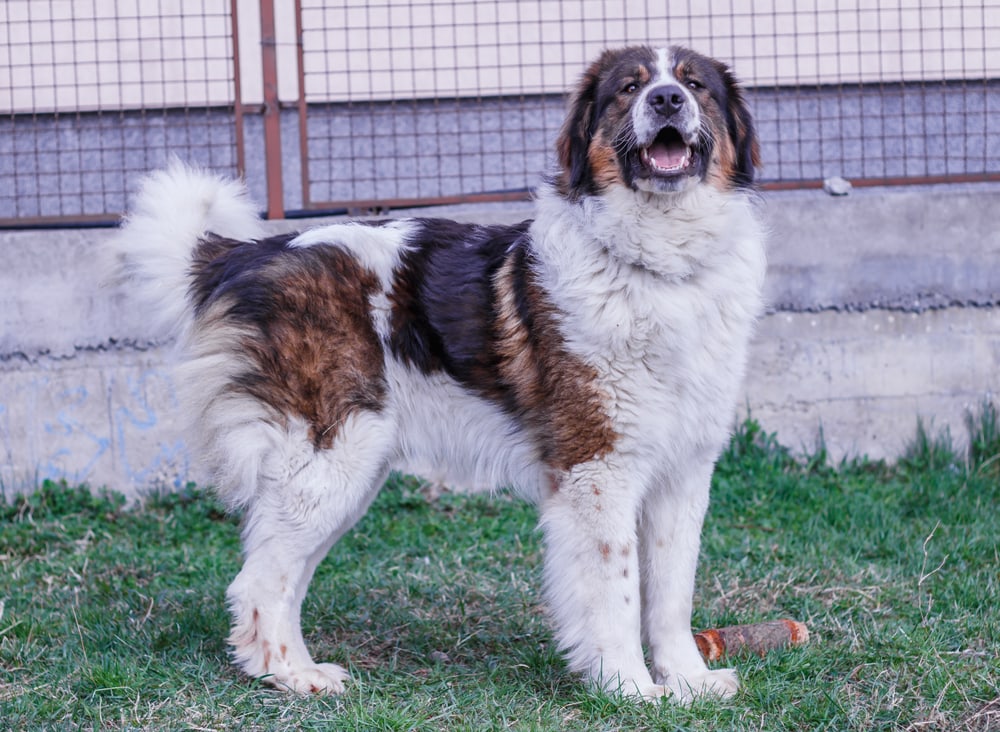
Temperament & Intelligence of the Tornjak 🧠
You might expect a dog capable of fending off wolves and bears to be ferocious and aggressive, but that’s not true with Tornjaks. They’re laidback, loving dogs, and it takes quite a bit of effort to get them riled up.
They’re emotionally needy with their families, and they hate to be left alone, but they’re pretty indifferent toward strangers. They aren’t likely to run and jump on you the first time you’re introduced.
Tornjaks are smart as whips, which makes them easy to train. They pick up on new commands quickly, and their people-pleasing personalities ensure you won’t have to spend hours trying to convince them to do something new.
However, they have long memories, so they will not likely forget any mistreatment. As a result, using positive reinforcement is always the proper way to interact with them. Overall, Tornjaks are easy dogs to handle and an excellent option for novice owners.
Are These Dogs Good for Families? 🏡
Tornjaks make great family pets, and they’re easygoing and patient around children. They’re not high-strung but can run for days if your kids want to play. They’re sturdy animals, and kids can run into them and climb all over them with little fear of injuring them.
They’re patient enough to allow that sort of behavior, but you should curb it since you don’t want them to lose their temper if your kid hurts them accidentally. They’re not prone to unprovoked aggression, but they can respond violently if they feel their families are in danger.
That makes them fantastic guard dogs, but you may need to monitor them if your kids have friends over who like to roughhouse. Of course, they’ll guard more than just your kids. They’ll protect your property, too. If you live on a farm or ranch, they’ll consider it their farm or ranch.
Your livestock and other gear will come under their protection. You must give them plenty of room, so they’re best suited for houses with big yards or rural areas where they can roam. They’ll likely feel too cramped in an apartment to enjoy themselves, but they may not make their displeasure readily apparent.
Does This Breed Get Along with Other Pets? 🐶 😽
Generally speaking, Tornjaks get along well with dogs and other pets. They don’t have a strong prey drive, so they’re not likely to chase after your cat, and they love to play, which means they’ll welcome other canines into the house.
However, they’re protective of their families. As a result, they should be completely fine with animals they’ve been raised with, but they may need monitoring around strange creatures. You’ll need to watch them closely at the dog park.
Fortunately, while they’re intolerant of aggression toward their people, they’re not inherently jealous, so they won’t attack an animal for seeking your attention. Everything should be fine as long as the other animal stays on its best behavior.
They’re completely fearless when doing their duty, so if you take them for a hike and come across a bear, don’t be surprised when your Tornjak refuses to back down.
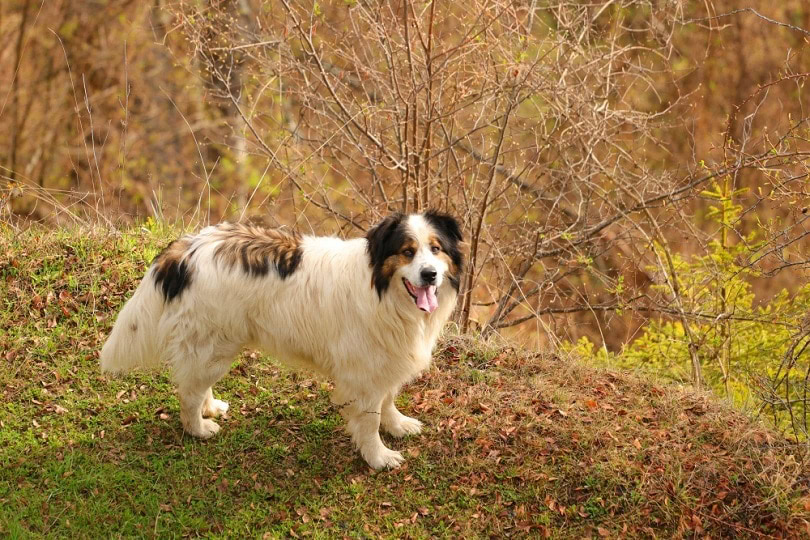
Things to Know When Owning a Tornjak
Tornjaks are easy dogs to own, but they have many quirks that set them apart from other dogs. Your experience with other breeds may steer you in the wrong direction when dealing with a Tornjak, so it’s best to do your research before bringing one home. Everything from their dietary requirements to their exercise needs can be counterintuitive, making them tricky to figure out at times.
The information below should take some of the mystery out of Tornjak ownership, giving you a leg up on owners who grab one of these furballs as puppies under the mistaken impression that a dog is just a dog.
Of course, every pup is an individual, so while this information should be valid for most Tornjaks, don’t be surprised if your dog throws you a few curveballs.
After all, there’s nothing that would be more typical of a Tornjak than being an atypical Tornjak.
Food & Diet Requirements 🦴
We recommend high-protein diets for most dogs since they provide readily available energy without causing excessive weight gain. However, Tornjaks are among the few breeds that will likely do better on a low-protein diet.
Throughout their history, they have been forced to survive on protein-restricted diets. They’ve grown accustomed to this, and now, giving them too much protein can actually lead to health problems.
Although you should restrict the amount of protein you give them, it’s still important to feed them high-quality meat. That means looking for lean cuts of meat or organs instead of animal by-products.
Check the ingredients label to ensure it uses healthy fruits and veggies, like kale, spinach, and broccoli. Avoid formulas that rely heavily on corn, wheat, and soy since manufacturers use them to keep costs down. However, they’re filled with empty calories and can be challenging for dogs to digest.
Tornjaks are prone to obesity, so portion control is a must. Don’t let them free-feed, but ensure that they eat a restricted diet and get plenty of exercise.
Exercise 🐕
For the first year or so of their lives, Tornjaks need minimal exercise. As puppies, they’re perfectly content to just lounge around, and you should let them because you don’t want to put too much strain on their developing joints.
You’ll also want to limit how much they climb stairs in the first year of their life. Too much stair climbing can damage their joints, so if you have a multi-level house, you’ll have to figure out a way to keep them on the ground floor until they mature.
Once they’re older, they’ll be able to run all day, but they’re still content to laze around if that’s what you prefer to do. That means you can take them out for an hour-long hike or just go for a short stroll around the block, and they’ll be fine either way.
Still, you should give them as much exercise as possible, as it’s good for their mental health and prevents obesity. They’re smart, so obedience competitions or agility training may be ideal for them
They’re not overly fond of water and may not enjoy swimming. That’s a shame because it’s a great, low-impact way to wear a dog out.
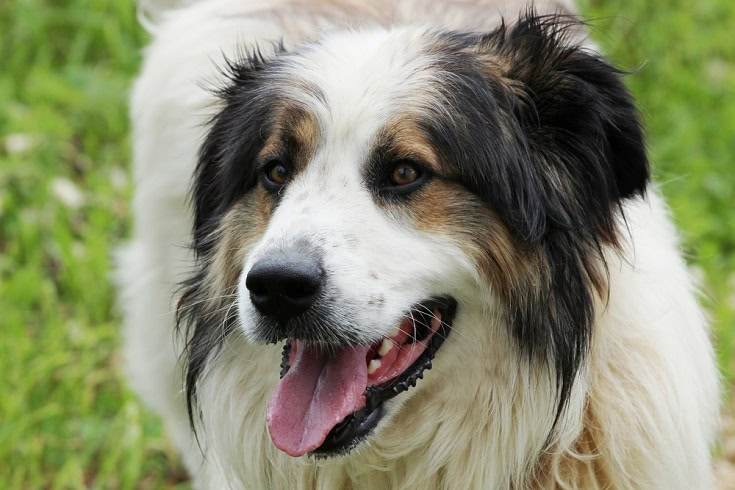
Training 🦮
Training a Tornjak shouldn’t be too difficult. They’re intelligent and eager to please, so they’ll pick up on what you’re trying to do almost immediately. They’re also willing to do the same thing over and over if it makes you happy, and they’re not as prone to boredom as other intelligent breeds.
You don’t necessarily need to bribe them with treats to convince them to obey you, either. They’re perfectly happy to follow orders if all they earn in return is a bit of praise and a pat on the head. Be careful not to punish them if they misbehave. They respond best to positive reinforcement, and if you lose their trust, you may never regain it.
They have long memories, which come in handy during training but can work against you if you get on their bad side. Socialization is as important as training and should be started as early as possible. You have a limited window in which to introduce them to new stimuli in a positive manner, so try to make sure they have plenty of varied experiences before turning 9 months old.
Try to introduce them to new people and animals frequently. It’s extremely important to get them acclimated to newcomers if you don’t want them to be nervous or suspicious of strangers.
Grooming ✂️
Tornjaks were bred to spend long hours outdoors watching over flocks. They’re accustomed to cold weather and happily curl up in the snow without getting cold because of their long, thick coats.
Their fur requires maintenance, and they shed frequently. It’s especially bad if you keep them in a hot climate, but as long as you brush them daily, you should be able to keep things under control.
Still, you might want a professional groomer to give them a haircut during the summer, as that will keep the dog more comfortable and your furniture less fur-covered. They don’t need bathing and are not usually fond of the water, so bathtime might be challenging.
Their nails should be trimmed as needed, but if they spend a great deal of time outdoors, they may file them down on their own. Their ears also need to be cleaned regularly to prevent infection.
Beyond that, all they need is regular tooth brushing to prevent dental problems.
Health Conditions ❤️
Most large-breed dogs are prone to a host of health conditions, but that doesn’t seem true for Tornjaks. They’re healthy dogs, provided they’re fed and cared for properly.
You need to be careful not to put too much stress on their joints, so don’t overfeed them or force them to do a great deal of jumping. They may also struggle if their diets are too high in protein.
- Skin and coat issues
- Hip and elbow dysplasia
- Obesity
Male vs Female
Males and females are similar, but male Tornjaks can grow taller and heavier. Females mature faster, so they may be easier to train, especially in the early years. Primarily, everything about Tornjak’s nature applies equally to both sexes.
Final Thoughts
Although Tornjaks may not be the most popular breed on the planet, they deserve more attention than they get. They’re healthy, lovable dogs that are easy to handle. They need plenty of space and can be overprotective if not properly socialized. As puppies, you’ll need to spend a great deal of time introducing them to people and animals.
If you care for them properly, you’ll be hard-pressed to find a better dog than the Tornjak. Unfortunately, given their rarity, locating one in the first place is challenging.
See also:
- Weimshepherd (Weimaraner & German Shepherd Mix) Info, Pics, Facts
- Native American Shepherd: Info, Pictures, Characteristics & Facts
Featured Image Credit: Ivan Kebe Photography, Shutterstock




